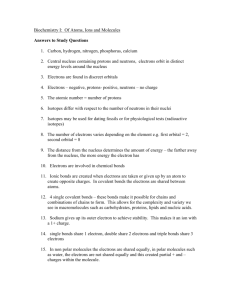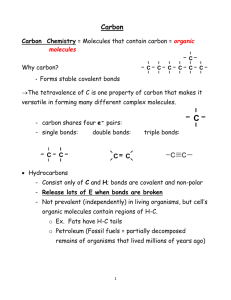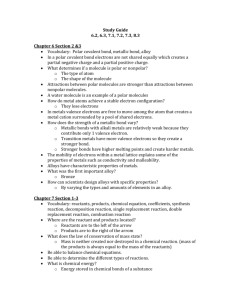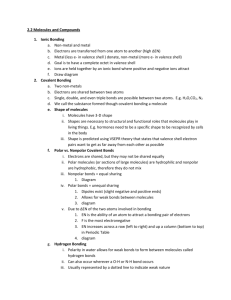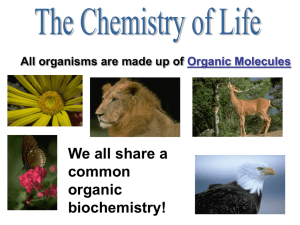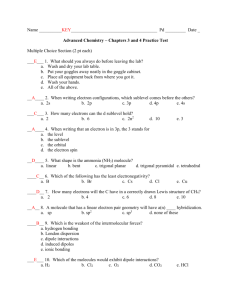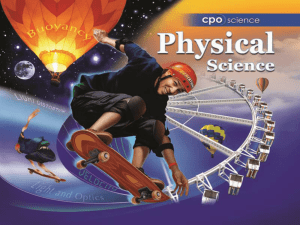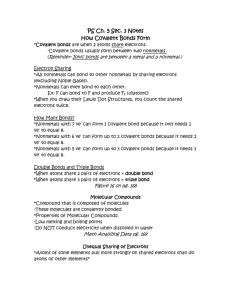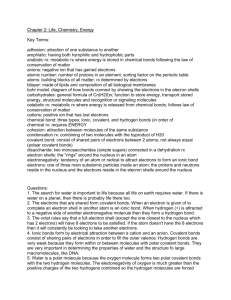polar liquid
advertisement
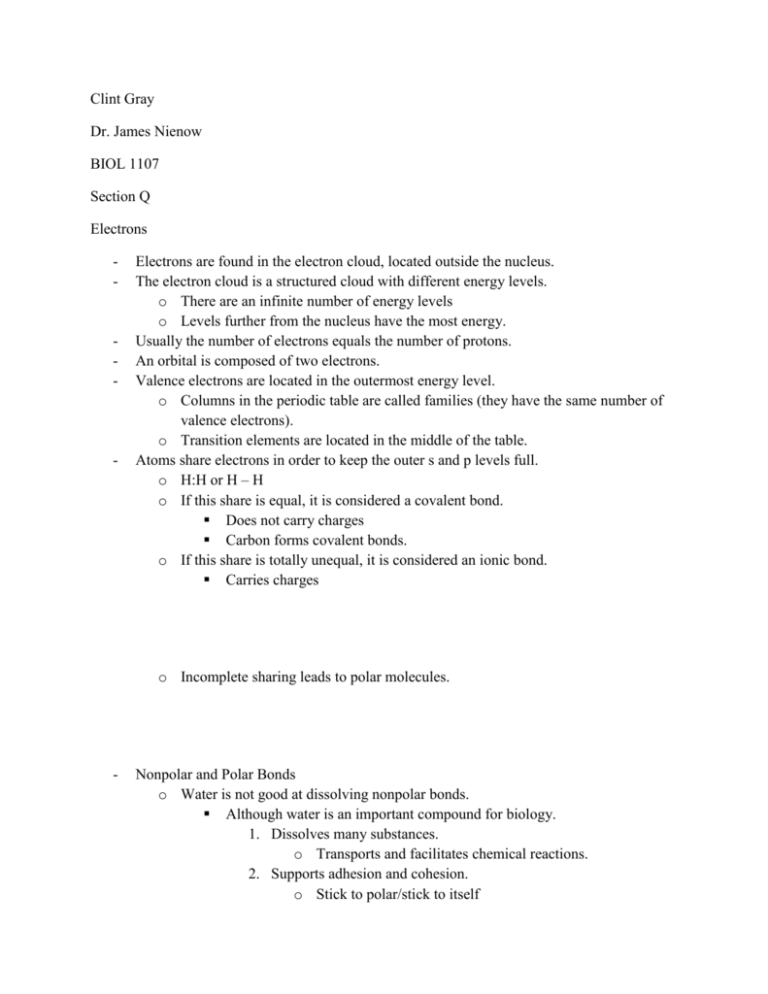
Clint Gray Dr. James Nienow BIOL 1107 Section Q Electrons - - - Electrons are found in the electron cloud, located outside the nucleus. The electron cloud is a structured cloud with different energy levels. o There are an infinite number of energy levels o Levels further from the nucleus have the most energy. Usually the number of electrons equals the number of protons. An orbital is composed of two electrons. Valence electrons are located in the outermost energy level. o Columns in the periodic table are called families (they have the same number of valence electrons). o Transition elements are located in the middle of the table. Atoms share electrons in order to keep the outer s and p levels full. o H:H or H – H o If this share is equal, it is considered a covalent bond. Does not carry charges Carbon forms covalent bonds. o If this share is totally unequal, it is considered an ionic bond. Carries charges o Incomplete sharing leads to polar molecules. - Nonpolar and Polar Bonds o Water is not good at dissolving nonpolar bonds. Although water is an important compound for biology. 1. Dissolves many substances. o Transports and facilitates chemical reactions. 2. Supports adhesion and cohesion. o Stick to polar/stick to itself - o Capillary flow and water transport. 3. Hydrophopic interactions occur. o Water bonds and excludes molecules. 4. Specific heat (1 cal/g) o Homeostasis o Water expands when freezing. All of these uses for water are possible because water is polar. o Polar – liquid at room temperature, sometimes solid. o Non-Polar – gas at room temperature, sometimes liquid. Solutions and Concentrations o Percent composition is grams of solute per 100mL of solution (mg per deciliter 100mL) o Molarity is molecules per liter of solution. Water Solutions - Acids – increase the concentration of H+ in a solution. Bases – decrease the concentration of H+ by 10 x -14 pH levels in the Mitochondria: - Buffers - Biological Chemistry o BioChem consists of water and ions (electrolytes) o Organic molecules contain reduced Carbon Reduced Carbon has extra electrons *NOTE* - If Carbon touches H then it’s organic; if it loses electrons then its not. - Organic Molecules (Types) o Number of Carbons (must have 4 bonding lines). o Arrangement of Carbons (Structural Isotopes). o Double Bonds o Triple Bonds o Doodads o Basic Organic Molecule (Hydrogen) purely H and C. *We add doodads to hydrocarbon to make it safer and more useful. - Biological Organic Molecules o Fats and Lipids are monomers and polymers that conduct dehydration reactions and hydrolysis reactions. o Fat Glycerol or fatty acids - Phospholipids Saturated - Amphipatic cell membrane
